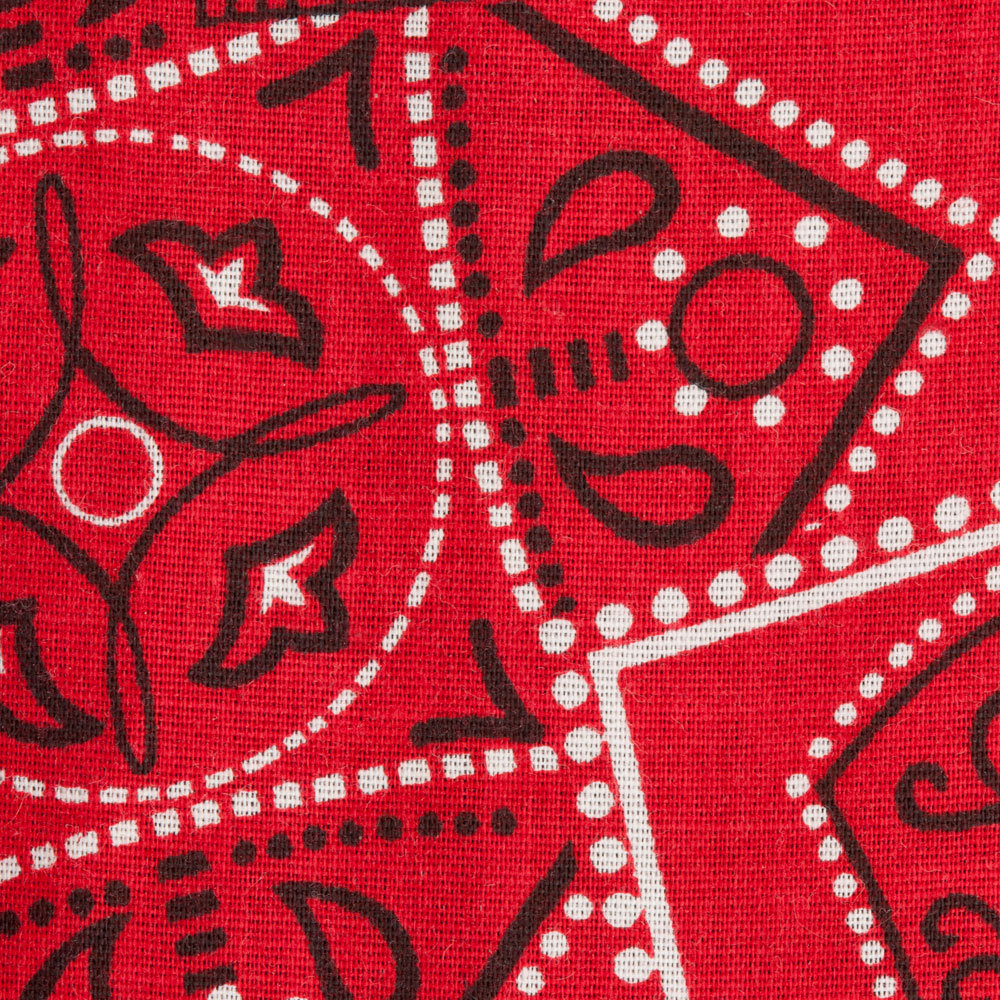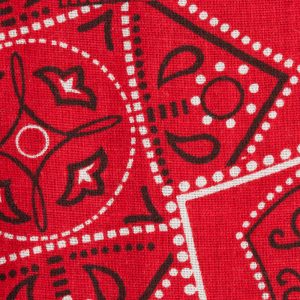Although we now associate bandanna with a handkerchief of red or navy with a black and white pattern, a much older resist-dyed fabric from India is the progenitor of the mass-produced modern version. The name comes from the Hindi word bandhana meaning “to tie”—as in the preparation for dying the fabric. Tying small areas of a cotton cloth and then dying the fabric creates a tie-dye pattern of white spots in a darker ground.
Bandanna discharge prints are also mentioned in some sources.
Uses: Handkerchiefs, scarves (Note that bandanna is both a fabric type and the scarf to which it gives its name.)
See also:
Tie-dye
Discharge print

